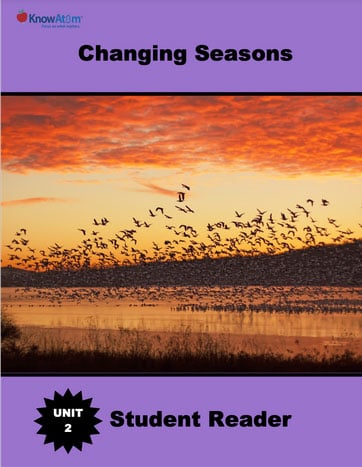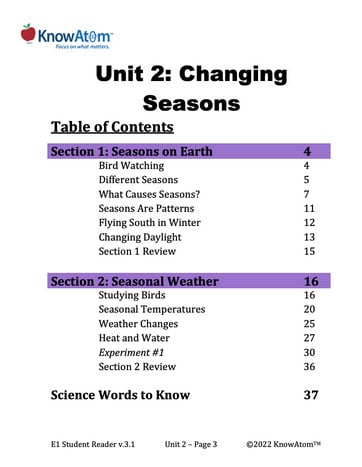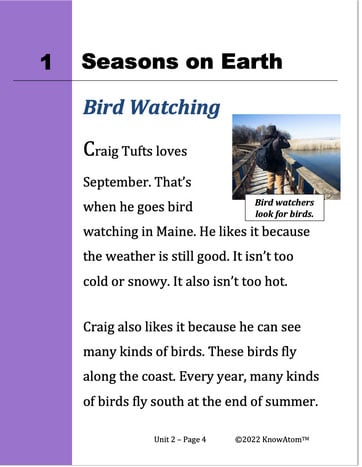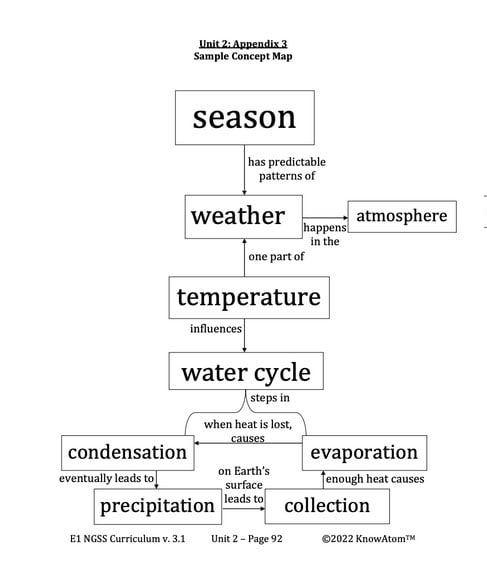In this lesson, students analyze graphs to connect seasonal temperatures with the amount of daylight over a year. Students then conduct an experiment to test how heat affects how much water cycles.
In this unit, students investigate the science phenomena of seasonal patterns and water cycles. Once students have analyzed how seasonal patterns of sunrise and sunset can be observed and predicted, they focus on seasonal temperature and rainfall patterns. They investigate temperature patterns of a specific location throughout the year.
This page showcases an overview of lesson two during which students continue to explore seasonal patterns, focusing on seasonal temperature differences and changes in the water cycle based on the amount of heat present.
The science background provides teachers with more in-depth information about the topic students are exploring in the unit. It helps teachers to be equipped with the “how” and “why” questions related to the phenomena that students may have throughout the unit of inquiry.
There is a set amount of water on Earth, and this amount has remained fairly constant over time. When rain or snow falls, it is not new water. In fact, it is the same water that was around when dinosaurs still roamed Earth. Water is constantly cycling around the planet, powered by heat from the sun and the downward pull of gravity.
The amount of precipitation is an important part of a location’s weather and climate. Climate is the average weather of a location for 30 years or more. A region’s climate determines the kinds of living things that will survive there because different living things have different requirements for amounts of water and the temperature range in which they can survive.
In this lesson, students analyze graphs to connect seasonal temperatures with the amount of daylight over a year. Students then conduct an experiment to test how heat affects how much water cycles.

Prepared hands-on materials, full year grade-specific curriculum, and personalized live professional development designed to support mastery of current state science standards.
Misconception: Seasons are caused by Earth’s distance from the sun—summer is warm because Earth is closer to the sun. Winter is cool because Earth is farther from the sun.
Atmosphere : the blanket of air that covers a planet
Collection : the process of liquid water being stored on Earth’s surface
Condensation: the process of water vapor changing into liquid water
Evaporation : the process of liquid water changing into water vapor, its gas state
Precipitation : Defining and Delimiting Engineering Problems
Season : Optimizing the Design Solution
Temperature : a measure of heat; measured with a thermometer
Water cycle :Optimizing the Design Solution
Weather : the conditions of the atmosphere in a particular place at a particular time; includes temperature and precipitation
The sun heats water on Earth. Some of the water in the oceans, rivers, and lakes turns into a gas. This gas moves into the atmosphere. We can’t see it, but it is still there. This is evaporation.
Evaporation is what happens when you leave a glass of water outside on a hot summer day. Over time, there will be less water in the glass. The water didn’t disappear. Heat turned some of that water into a gas in the air.
Over time, water in the atmosphere gets cooler. It turns back into a liquid. This is condensation. The drops of water attach to pieces of dirt or dust in the sky. Over time, many of these pieces join together. They form a cloud.
When the cloud gets too heavy, the liquid water falls back onto the surface. It can be either rain or snow. This is precipitation.
After it rains, the water is stored in lakes, rivers and oceans. This is collection. That water is again heated by the sun. Some of it will evaporate again. Water always moves around the planet. This movement is part of the water cycle. Evaporation, condensation, precipitation, and collection are steps of the water cycle.



In this lesson, students go through the scientific process and conduct an experiment to determine how the water cycle varies based on the amount of heat present. First, students come up with a question to explore regarding how heat affects the water cycle. Then, they develop a hypothesis to test in an experiment using simple materials. In the experiment, student teams collaboratively collect and analyze observational data about changes in the water within different containers after three days. Finally, they use the data to make a claim based on the evidence.
KnowAtom incorporates formative and summative assessments designed to make students thinking visible for deeper student-centered learning.

Standards citation: NGSS Lead States. 2013. Next Generation Science Standards: For States, By States. Washington, DC: The National Academies Press. Neither WestEd nor the lead states and partners that developed the Next Generation Science Standards were involved in the production of this product, and do not endorse it.
